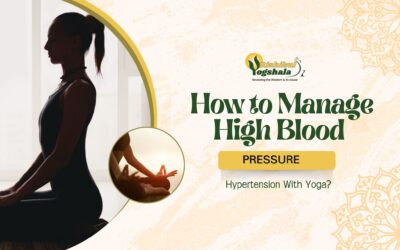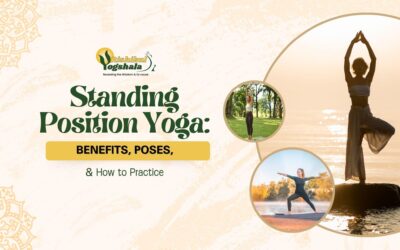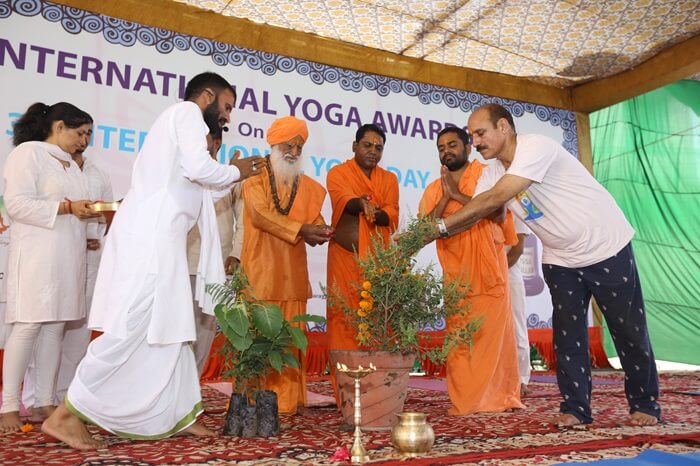5 Excellent Pranayama Breathing Techniques for Stress Relief
If you find yourself stressed, anxious, or experiencing any negativity, take a moment to breathe deeply. Long, smooth inhalations and exhalations offer numerous physical and psychological benefits, such as slowing an aggravated heart rate and activating the parasympathetic nervous system, which helps the body and mind to rest and manage stress effectively.
Each breath you take is a chance to release tension, allow prana to flow through you, and develop compassion and health. Here are five excellent pranayama breathing techniques to help you relax and bring calm and wellness to your life.
1. Alternate Nostril Breathing (Anulom-Vilom/Nadi Shodhana)
Alternate nostril breathing is a great way to start the day, as it clears and calms the mind. A few minutes of this practice can make you feel balanced and focused.

Steps:
- Sit tall in Easy Pose (Sukhasana) or on a chair. Relax your face and shoulders.
- For the hand mudra, close the index and middle finger to touch the palm.
- Lightly press your right thumb to close your right nostril.
- Breathe in through the left nostril, count the breaths taken in, and hold for four seconds.
- Close the left nostril with your ring finger and release the thumb from the right nostril. Exhale through the right nostril.
- Inhale through the right nostril, retain the breath, and exhale through the left. This completes one cycle.
2. Bumble Bee Breathing (Bhramari Pranayama)
Bumblebee breathing is excellent for tranquillizing the mind and inspiring creativity. It is one of the best techniques for instantly relieving agitation, frustration, and anger.

Steps:
- Choose a spacious and comfortable place. Sit on a yoga mat and cross your legs at the shins.
- Use your fingertips to cover your eyelids and thumbs to close your ears.
- Inhale deeply through the nose and, as you exhale, make a long, slow humming sound.
- Let the humming sound reverberate in your head for a calming effect. Repeat 3-4 times, focusing on your third eye.
3. Victorious or Ocean Breathing (Ujjayi Pranayama)
Ocean breath, a simple and effective technique, is used for connecting yoga postures. Its effects are calming yet energising for the whole body, mind, and spirit.

Steps:
- Sit in a relaxed position. Take deep, slow, and active inhalations, and let the exhalations out naturally.
- Softly whisper the ‘ahh’ sound every time you exhale.
- Close your eyes and feel how your breath mimics the sound of the ocean.
- Ensure you completely fill your lungs during inhalations and release all the air during exhalations.
4. Breath of Fire (Kapalbhati Pranayama)
Breath of Fire, also known as Skull-Shining Breathing, is a cleansing technique that invigorates the mind and helps build inner core strength.

Steps:
- Sit up tall and lengthen the space between the navel and the heart.
- Breathe in and out through the nose. Draw your abdomen in during exhalation and out during inhalation.
- Make your breathing loud and quick, equalizing the strength and length of your inhales and exhales.
- Avoid this practice if you have vertigo, high blood pressure, or if you are pregnant.
Read More- Kapalbhati Pranayama – Top 7 Excellent Health Benefits
5. Bellows Breathing (Bhastrika Pranayama)
Bellows breathing is an energetic technique suitable for combating sluggish feelings. It aids in weight loss, powering up the digestive system, and boosting metabolism.

Steps:
- Practice Bhastrika pranayama techniques in a seated position.
- Breathe in, filling up the lungs, and breathe out through the nose.
- Keep yourself relaxed during the practice of bellows breathing.
By incorporating these five pranayama breathing exercises into your routine, you can relax and refresh yourself in stressful and uneasy situations.
Read More – 6 Types Of Yoga Breathing
Conclusion
Incorporating pranayama breathing techniques into your daily routine can significantly enhance your mental and physical well-being. These practices not only help in managing stress but also improve overall health and vitality. Explore more about these techniques and deepen your practice with comprehensive 200 Hour Yoga Teacher Training In India , 300 Hour Yoga Teacher Training India, and 500-hour Yoga teacher training in Kerala. For a holistic wellness experience, consider an Ayurveda Retreat in India or a Yoga Retreat in India with Rishikul Yogshala.
















